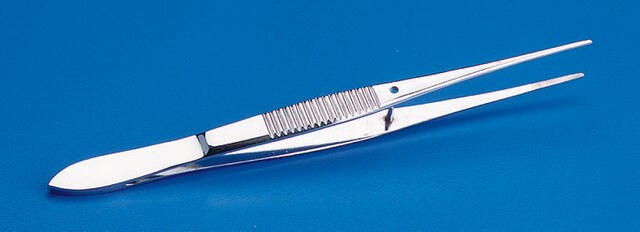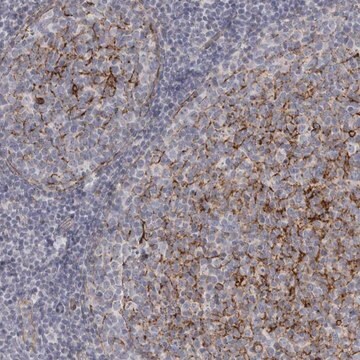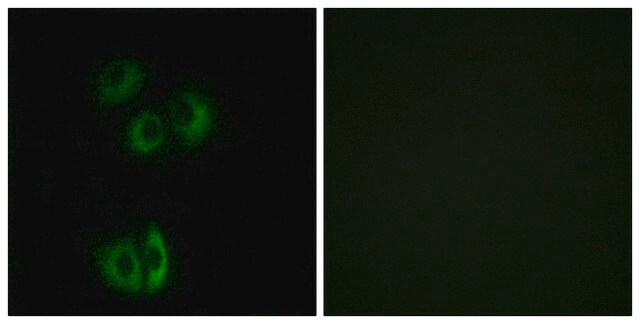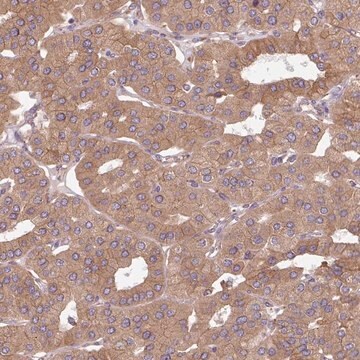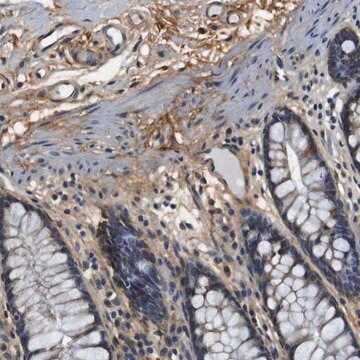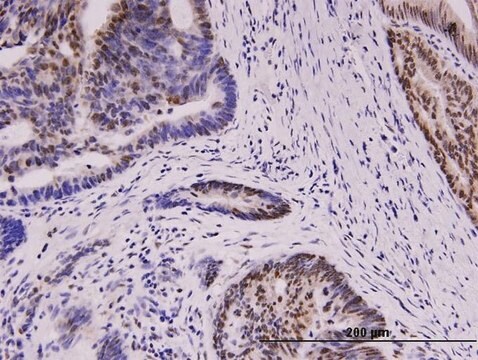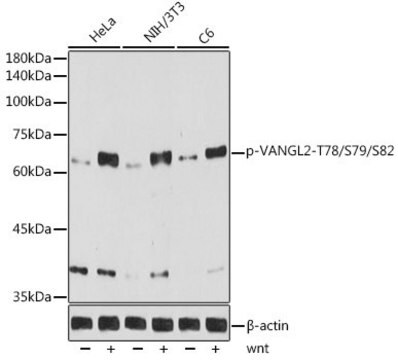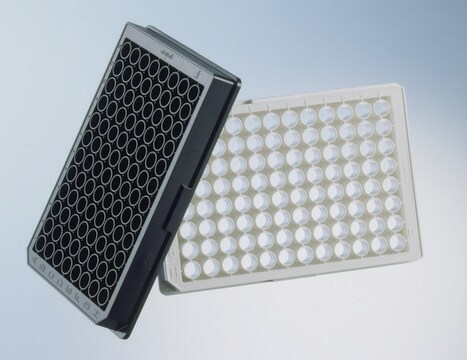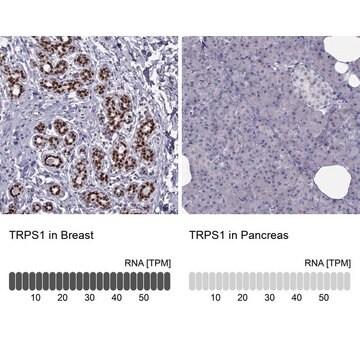MABN750
Anti-VANGL2 Antibody, clone 2G4
clone 2G4, from rat
Sinônimo(s):
Vang-like protein 2, Loop-tail-associated protein, Loop-tail protein 1, Strabismus 1, Van Gogh-like protein 2
About This Item
Produtos recomendados
fonte biológica
rat
Nível de qualidade
forma do anticorpo
purified immunoglobulin
tipo de produto de anticorpo
primary antibodies
clone
2G4, monoclonal
reatividade de espécies
human, mouse
reatividade da espécie (prevista por homologia)
rat (based on 100% sequence homology), bovine (based on 100% sequence homology)
técnica(s)
ELISA: suitable
immunofluorescence: suitable
immunoprecipitation (IP): suitable
western blot: suitable
Isotipo
IgG2aκ
nº de adesão NCBI
nº de adesão UniProt
Condições de expedição
ambient
modificação pós-traducional do alvo
unmodified
Informações sobre genes
human ... VANGL2(57216)
mouse ... Vangl2(93840)
Descrição geral
Especificidade
Imunogênio
Aplicação
Immunofluorescence Analysis: A representative lot detected VANGL2 immunoreactivity co-localized with that of VANGL1 at the cell membrane of the stereociliary hair bundles by fluorescent immunohistochemistry staining of 4% paraformaldehyde-fixed cochleae whole mount sections. A drastically reduced VANGL2 was observed in tissue sections from homozygous Vangl2 Looptail mutant (Lp/Lp) mice (Belotti, E., et al. (2012). PLoS One. 7(9):e46213).
Immunoprecipitation Analysis: A representative lot immunoprecipitated VANGL2, but not VANGL1, N-terminal fragment GST fusion, as well as endogenous VANGL2 from untreated, but not VANGL2 shRNA-treated SK-BR-7 human breast carcinoma cells (Belotti, E., et al. (2012). PLoS One. 7(9):e46213).
Western Blotting Analysis: A representative lot detected the endogenous VANGL2 as well as exogenously expressed yellow fluorescent protein Venus-tagged VANGL2 in transfected in MEC1 human chronic lymphocytic leukemia (CLL) cells (Kaucká, M., et al. (2015). Cell Commun Signal. 13:2).
Western Blotting Analysis: A representative lot detected VANGL2, but not VANGL1, N-terminal fragment GST fusion, as well as endogenous VANGL2 in lysate from untreated, but not VANGL2 shRNA-treated SK-BR-7 human breast carcinoma cells (Belotti, E., et al. (2012). PLoS One. 7(9):e46213).
Western Blotting Analysis: A representative lot detected higher VANGL2 expression in mouse brain and lung than kidney. A decreased cochlear VANGL2 expression was found among mice with heterozygous Vangl2 Looptail mutation (Lp), the decrease was even more pronounced among homozygous Vangl2(Lp/Lp) mice (Belotti, E., et al. (2012). PLoS One. 7(9):e46213).
Neuroscience
Qualidade
Western Blotting Analysis: A 1:500 dilution of this antibody detected VANGL2 in 10 µg of mouse brain tissue lysate.
Descrição-alvo
forma física
Armazenamento e estabilidade
Outras notas
Exoneração de responsabilidade
Não está encontrando o produto certo?
Experimente o nosso Ferramenta de seleção de produtos.
Código de classe de armazenamento
12 - Non Combustible Liquids
Classe de risco de água (WGK)
WGK 1
Ponto de fulgor (°F)
Not applicable
Ponto de fulgor (°C)
Not applicable
Certificados de análise (COA)
Busque Certificados de análise (COA) digitando o Número do Lote do produto. Os números de lote e remessa podem ser encontrados no rótulo de um produto após a palavra “Lot” ou “Batch”.
Já possui este produto?
Encontre a documentação dos produtos que você adquiriu recentemente na biblioteca de documentos.
Nossa equipe de cientistas tem experiência em todas as áreas de pesquisa, incluindo Life Sciences, ciência de materiais, síntese química, cromatografia, química analítica e muitas outras.
Entre em contato com a assistência técnica